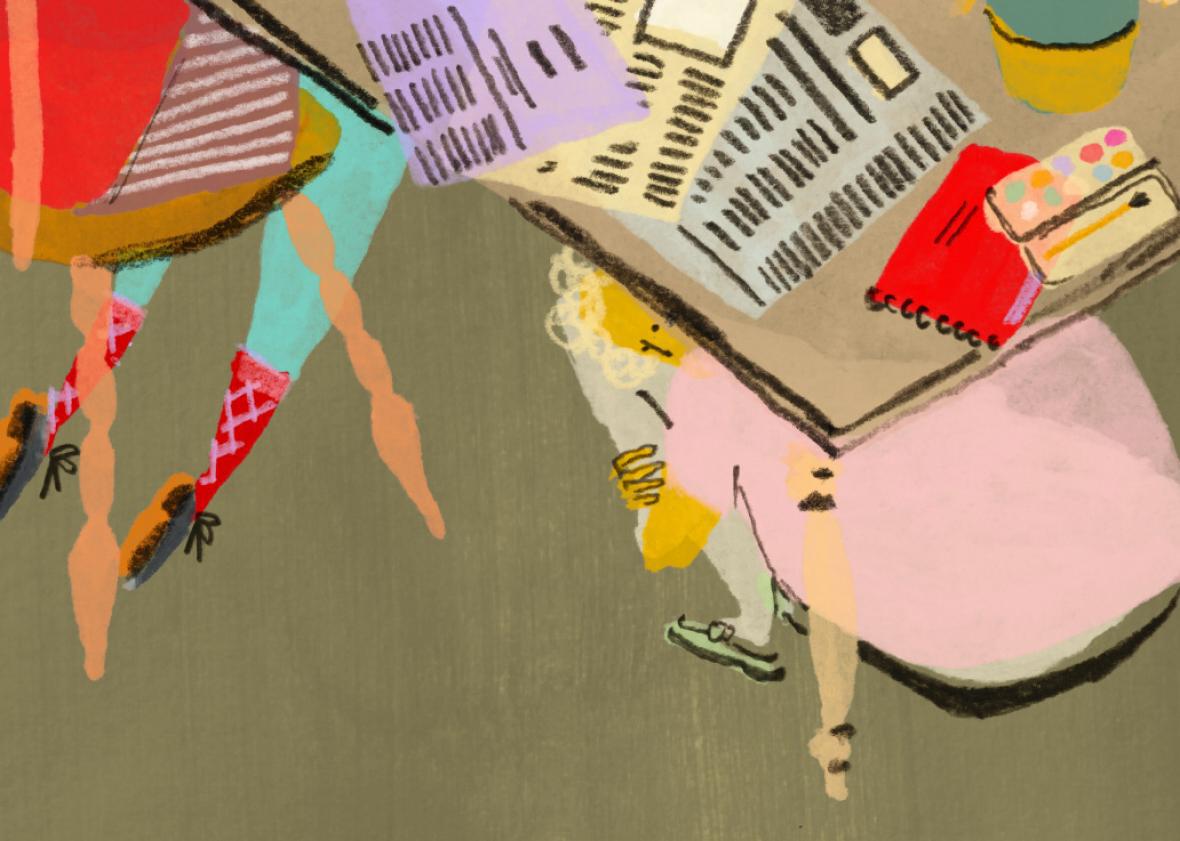I am a terrible photographer. In a day and age in which we all carry powerful cameras in our pockets, where almost anyone can share lovely photos of vacations, soccer games, or his or her dinner within seconds of taking them, I burden my Facebook friends with snapshots that are out of focus, poorly lit, and lacking any kind of thoughtful composition.
My inner perfectionist—and a heavy dose of stubbornness—is to blame.
One warm summer evening before my freshman year, I announced to my parents that I would be the first person to graduate from our high school with a perfect 4.0 GPA and 12 varsity letters (making varsity in three sports a year for four years).
I accomplished my goal. But I didn’t know then that “doing it all” would mean missing out on so much. At 14, I was confident that I would be able to mow through algebra, English, and world history. I had calculated that I could probably hang with the upperclassmen well enough to letter in cross-country and swimming (track was less certain, though I lucked out that no one else wanted to run the 3,200 meters).
But just as I stuck to sports like running and swimming because I lacked the coordination to make the basketball or volleyball teams, I worked to excel at English and math and science because I was bereft of any artistic ability. In middle school, when the teacher of our gifted program gave us an assignment to pick a painter to study (and then emulate), I chose Jackson Pollock. When I tried that same trick with my art teacher the next year, I got busted and had to choose someone else. (Hello, Piet Mondrian, you beautiful neoplasticist, you.)
So when I had to fill out my schedule with electives, I steered clear of anything that might compromise my GPA—like photography. While I was reading books for English that I don’t remember and studies for psychology class that have by now certainly been debunked, my friends were learning about f-stops and shutter speeds and aperture.
Admittedly, if I had the chance to do it all over, I’m not sure I would choose differently. Graduating first in my class helped me earn scholarships that made college more affordable and guaranteed my acceptance into my journalism school of choice.
But I do wish that there had been a third way. If only I could have taken a class here and there without risking my GPA, it might have opened up whole new worlds, satisfied my curiosity, and kept high school from being such a demanding slog. If only my school had offered the opportunity to take the occasional elective as pass/fail.
Most colleges do offer pass/fail classes, in which a student is expected to participate and complete all classwork but not receive a letter grade. And all college students should take some extra classes pass/fail. They are a tremendously attractive option for curious minds who want to try out new areas of study before changing their majors or who want to take an art history class even though they are chemistry majors.
But as much as high school has changed in the past two decades, that’s not an improvement that enough high schools have adopted. I polled friends and family members who teach high school or have children in high school, and they all pretty much said they couldn’t imagine that the classes would be offered, or taken.
Today’s students face an even more powerful pressure-cooker situation than I did in the early 1990s. More students are going to college, and the demands this heightened competition places on the application process—with elite schools rejecting 70 percent or more of the applications they receive—lead high school students to sign up for ever-more extracurriculars and crazy summer internships. Sadly, once they get to college, they are more likely to need mental health services to help them cope.
A few schools have the right idea. Like Fairfax County Public Schools in Virginia, where students, with parental approval, can take one elective credit per year outside of the core requirements like reading, math, science, or social studies. Rancho Bernardo High School in San Diego offers students a pass/fail option, and it goes one step further, with what it describes as option “6½ Period classes” that are pass/fail, meet twice a week, and earn a student half the normal credit for a class. Sample offerings include ceramics, musical theater, and robotics.
God knows that high schools have enough challenges right now—struggling to adopt new academic standards like Common Core, dealing with parents complaining about standardized testing, and teachers complaining (justifiably!) about unfair measurements of their progress. Maybe it’s unfair to ask them to rewrite their course catalogs and academic rules to accommodate a few students who are afraid to get B’s.
But if high school is really all about preparing for college and the real world, give them a real idea of what they have to look forward to: the chance to try new things and open their minds. And let the kids be kids. It’s their last chance.
Read more of Slate’s collection of classes you should take.
What classes did we miss? Send your recommendations of up to 200 words to classes@slate.com, and we’ll publish the best.
